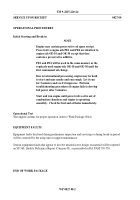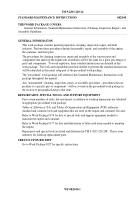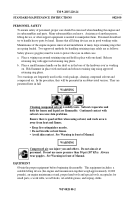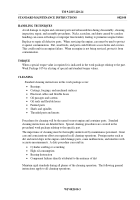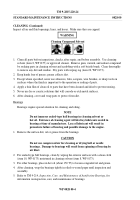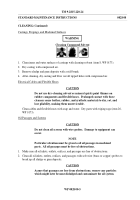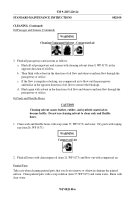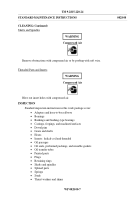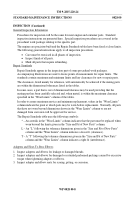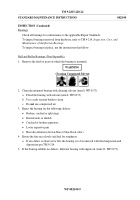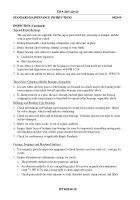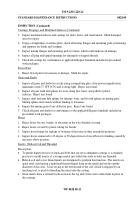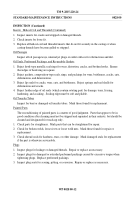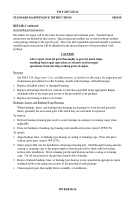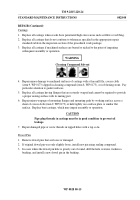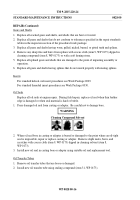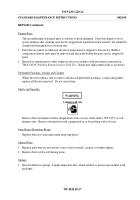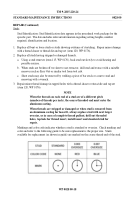TM-9-2815-220-24 - Page 190 of 1563
TM 9-2815-220-24
STANDARD MAINTENANCE INSTRUCTIONS
0028 00
INSPECTION (Continued)
Tapered Roller Bearings:
The cup and cone are separable; but the cup is press-fitted into a housing or retainer, and the
cone is press-fitted on a shaft.
1.
During disassembly, clean bearing components (cup and cone) in place.
2.
Reject bearing cup for pitting, flaking, scoring or wear bands.
3.
Reject bearing cone rollers for similar defects found on cup and other defects listed below:
•
•
Cracked or broken separators
Heat discoloration
4.
If any defect is observed or felt, the bearing is to be removed from hardware with final
inspection and disposition in accordance with TM 9-214.
5.
If cup and cone exhibit no defects, lubricate cup and cone with engine oil (item 21, WP 0173).
Three-Piece Cylindrical Roller Bearings (Separable):
1.
In cases where all three pieces of the bearing are retained on a shaft, inspect the bearing in the
same manner as described for ball and roller bearings (non-separable) above.
2.
If, during removal of a gear, the race, bearing, and end plate separate, inspect the bearing
components in the same manner as described for tapered roller bearings (separable) above.
Bushings and Bushing-Type Bearings
1.
Check all bushings and bushing-type bearings for secure fit in casting or mating part.
Reject
for color changes, which could indicate overheating.
2.
Check for dirt in oil holes and in bushing-type bearings.
Oil holes and grooves must be clean
and not damaged.
3.
Reject for wear, burrs, nicks, or out-of-round condition.
4.
Inspect thrust faces of bushing-type bearings for wear by temporarily assembling mating parts
and checking end play with a feeler gauge inserted between the thrust faces.
5.
Check for conformance to applicable Repair Standards.
Castings, Forgings, and Machined Surfaces
1.
Use magnetic particle inspection equipment to check ferrous (cast iron, steel, etc.) castings for
cracks.
2.
Inspect all nonferrous (aluminum) castings for cracks.
a. The preferable method is the dye penetrant
method.
b. An alternate method is to use a magnifying glass (five power magnification minimum)
(item 73, WP 0176) and a strong light to check suspected cracks.
c. Check particularly the areas adjacent to studs, threaded inserts, sharp corners, and fillets.
WP 0028 00-10
Back to Top

